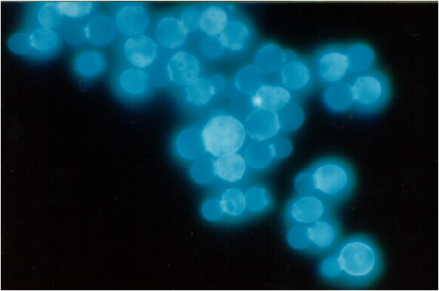[The Leaven – exploring the relationship between science and religion (cont)]
Not only does yeast now serve as one of the most important organisms throughout domestic history, in recent years it has also substantially contributed to biological research. The numerous molecular techniques that have evolved in yeast have allowed it to make an important contribution to a number of areas in science. Through studying various types of yeast and other microbes, scientists now know a great deal about the molecular processes involved in cell division, rapid evolution and disease.
Fortunately, individuals with skin diseases are no longer thought of as unclean and are normally treated within the community. Scientists have greater understanding of disease management and although quarantine and hygiene are still practiced they are now carried out in order to reduce disease transmission. In the majority of cases, people are not ostracised when they are infected by disease, although fears and anxieties can still be generated through sensational media coverage. Nevertheless, even in this molecular age, some transmissible diseases are still associated with sins of the flesh and can lead to social ostracisation.

Yeast colonies in an array. Each spot contains thousands of yeast cells. The plate shows synthetic lethal interactions when the interaction of 2 or more genes cause cell death (shown by colonies with reduced/no growth colonies). Image uploaded by Masur
There are still many diseases that generate fear because they are untreatable. Some of these have evolved through human activities, such as Bovine spongiform encepthalopathy (BSE) which gives rise to a human form of spongiform encepthalopathy called variant Creutzfeldt-Jakob Disease (CJD). The causative agent of BSE is a defective version of a protein called prion that is similar to one found in the brains of sheep with Scrapies. The prion protein is transmitted horizontically and causes disease through disrupting the normal function of the native protein. Studying the molecular mechanisms by which proteins change conformation to become prions in yeast has led to a greater understanding in the pathology of this disease. Many other human diseases, especially cancers, can be researched by studying molecular processes first in yeast.
Cancers arise when cells begin to divide abnormally due to mutations in DNA. Cancer research investigates the mechanisms that encourage these mutations to arise. The mechanism of cell division is often studied in fission yeast, Schizosaccharomyces pombe. Unlike Saccharomyces cerevisiae, which divides by budding, S. pombe divides symmetrically in a similar way to human cells. Fission yeast originates from Africa were it is found growing on banana skins and is used to ferment beer. Through research in this area scientists have reached many milestones in the mechanisms that have caused various cancers leading to greatly improved clinical treatments. Work yeast genetics has greatly contributed to our understanding of cell cycle research and has led to the award of a Nobel prize in 2001 to three scientists who led pioneering work in this area: Paul Nurse, for his work in S. pombe and human model systems; Leland Hartwell, for his work in S. cerevisiae; and Tim Hunt who used sea urchins as a model system. Researchers later found similar cell division genes in human genomes.

Scanning electron micrographs of Fission yeast (Schizosaccharomyces pombe). Image by David O Morgan.
In addition to investigating diseases, yeast is also used as a model system to research ageing. Saccharomyces cells can divide by budding a number of times but the new bud is always physiologically younger than the mother cell. Each cell produces about thirty buds depending on the environmental conditions and other factors. About thirty genes in yeast have already been found to be involved in ageing. The main factors seem to be related to metabolic capacity, resistance to stress, gene dysregulation and genetic stability. Encountering certain environments that would overload any of these factors would also affect longevity. For instance, excessive oxidative damage or radioactivity would lead to a high level of mutations that will reduce the number of times that a cell can bud. Excessive oxidation is associated with the consumption of calories; so caloric restriction should result in increased longevity. This has been demonstrated in yeast, limiting the amount of nutrients and carbohydrates available in growth medium leads to a longer generation time and life span.


